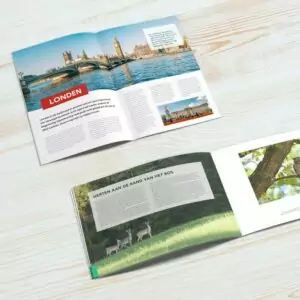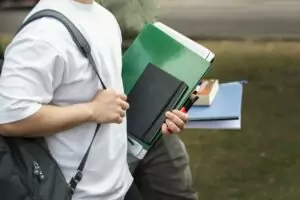Essay Examples and Samples
Academic Text Examples and Samples 2024
Jan 28
Voting Rights of 17-year-olds. Essay Sample and References
Overview: As of 2024, the topic of voting rights for 17-year-olds has seen significant developments in several U.S. states. Specifically, in New Jersey, Governor Phil…
3 min read
Application Essay Examples and Samples

Oct 19 2023
Lifelong Learning Personal Statement Sample
The following personal statement sample can be utilized as a blueprint for your application to a university, college, or program. It comprises essential components that…
3 min read
Business Writing Examples and Samples
May 06 2023
Corporate Governance vs IT Governance Essay Sample, Example
Corporate governance and IT governance are two essential concepts in modern business organizations. Corporate governance refers to the system of rules, procedures, and practices that…
2 min read
Creative Writing Examples and Samples

Jun 13 2023
Critical Threats to the Global Environment Essay Sample, Example
The global environment The global environment is facing critical threats that are rapidly becoming more apparent with each passing day. These threats are causing serious…
3 min read
Letter Writing Examples and Samples

Sep 17 2023
Francis Davis, Character Recommendation Letter Example
The following recommendation letter sample can be used as inspiration for your character reference for an individual. It provides a structured format and includes key…
2 min read
Writing Tips and Rules

Sep 27 2023
Avoiding Common Errors With Adjectives vs. Adverbs
When we communicate, adjectives and adverbs both serve as essential tools, helping us add color, depth, and specificity to our words. While their functions might…
2 min read
Crafting Outstanding Academic Papers: A Comprehensive Guide by AcademicHelp
Are you struggling to create academic papers that stand out? Do you want to produce content that not only impresses your professors but also ranks high on search engines? Look no further! At AcademicHelp, we specialize in helping you craft exceptional academic papers that showcase your expertise and knowledge. In this comprehensive guide, we’ll walk you through the process of creating outstanding academic papers that meet the highest standards of quality, all while adhering to Google’s E-A-T guidelines.
What Sets Academic Papers Apart?
Academic writing is a unique genre that requires precision, research, and a formal tone. Your paper should not only present information but also contribute to the existing body of knowledge in your field. Here’s what sets academic papers apart:
Scholarly Audience
Academic papers are written by scholars for scholars. This means your content should be insightful, well-researched, and targeted towards individuals who are knowledgeable about the subject.
Informed Argument
Your paper should revolve around an informed argument. This involves analyzing existing literature, identifying gaps, and presenting your perspective backed by solid evidence.
Formal Writing Style
Maintain a formal tone throughout your paper. Use precise language, avoid slang or colloquialisms, and adhere to proper grammar and punctuation rules.
Third-Person Perspective
Academic papers should be written in the third-person perspective. This enhances objectivity and demonstrates a scholarly approach to the topic.
Types of Academic Papers
There are various types of academic papers, each with its own purpose and structure. Let’s explore some common types:
Research Papers
Research papers delve into a specific topic, presenting original findings or contributing to existing research. They typically comprise sections like abstract, introduction, methodology, results, discussion, and conclusion.
Essays
Essays aim to present an argument or discuss a topic in depth. They require a clear thesis statement and supporting evidence. Essays come in different forms, such as expository, persuasive, or argumentative.
Book Reviews
A book review critically evaluates a book’s content, style, and significance. It involves analyzing the author’s purpose, comparing the book to others in the field, and offering your assessment.
Critical Writing
Critical writing involves analyzing and evaluating a text, research, or performance. It goes beyond summarizing and focuses on assessing the strengths, weaknesses, and implications of the work.
Reports
Reports convey specific information or findings. They are often used to present research outcomes, provide recommendations, or describe a particular phenomenon.
And More
There are numerous other types of academic papers, such as movie analyses, critique papers, and literature reviews. Each type serves a distinct purpose within the academic realm.
Crafting Your Academic Paper: A Step-by-Step Guide
Step 1: Choose a Captivating Topic
Select a topic that’s relevant, interesting, and aligns with your field of study. Your topic should spark curiosity and offer room for exploration.
Step 2: Formulate a Strong Research Question
Craft a clear and specific research question that guides your paper. This question should highlight the issue you’re addressing and the direction your paper will take.
Step 3: Conduct Thorough Research
Gather reputable sources and conduct thorough research to back your claims. Take detailed notes and keep track of your sources for proper citations.
Step 4: Develop a Solid Thesis Statement
Create a strong thesis statement that encapsulates the main argument of your paper. Your thesis should be concise, specific, and debatable.
Step 5: Organize Your Ideas
Create an outline that organizes your ideas logically. Include sections for introduction, literature review, methodology, results, discussion, and conclusion.
Step 6: Write the First Draft
Start writing your first draft, following the structure outlined in your outline. Focus on presenting your argument, supporting evidence, and maintaining a cohesive flow.
Step 7: Revise and Edit
Review your draft for clarity, coherence, and grammar. Ensure each paragraph contributes to your main argument and that your paper flows smoothly.
Step 8: Format Properly
Adhere to the citation style required by your institution (e.g., APA, MLA). Properly format in-text citations and create a bibliography or reference list.
Frequently Asked Questions
How Do I Start an Academic Paper?
Begin by selecting a captivating topic that aligns with your field. Formulate a research question that guides your paper’s direction. This foundational step sets the tone for your entire paper.
What Makes a Good Academic Paper?
A good academic paper presents an informed argument backed by thorough research and evidence. It adheres to formal writing standards, maintains a clear structure, and contributes to the scholarly discourse.
What Are the Essential Parts of an Academic Paper?
An academic paper typically consists of an introduction, literature review, methodology, results, discussion, and conclusion. These sections work together to present and support your argument.
How Do I Craft an Effective Thesis Statement?
Craft a strong thesis statement that encapsulates your paper’s main argument. Ensure it is specific, concise, and debatable. Your thesis guides readers through your paper’s focus.
How Do I Revise and Edit My Paper?
During the revision process, focus on clarity, coherence, and grammar. Ensure each paragraph contributes to your main argument and that your paper flows logically. Edit for grammatical errors and formatting.
Conclusion
Crafting exceptional academic papers is a skill that requires practice, research, and attention to detail. At AcademicHelp, we’re dedicated to guiding you through this journey. By choosing captivating topics, formulating strong research questions, conducting thorough research, and adhering to proper formatting, you can create academic papers that not only impress your professors but also rank high on search engines. Remember, every paper you write contributes to the scholarly conversation in your field. So, put your best foot forward and let AcademicHelp assist you on your path to academic excellence!









































